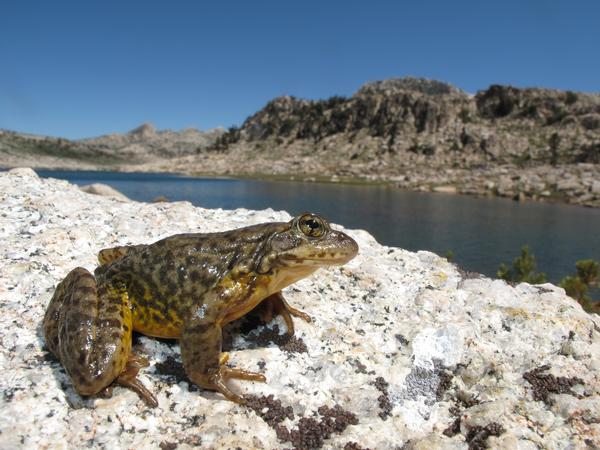
© USGSA Sierra Nevada yellow-legged frog (Rana scans the landscape in Yosemite National Park.
Frogs, toads and other amphibians are vanishing so fast nationwide that if the decline continues at the same rate, they'll be gone from half their current habitats in 20 years, a federal study has found.
U.S. Geological Survey officials on Wednesday unveiled the study, done over a decade, on 48 species at 34 sites from California to Colorado high-country to Florida swamps.
Federal scientists found that the declines are more widespread and severe than previously thought and that amphibian populations are disappearing at an overall rate of 3.7 percent each year.
Even species inside federally-protected areas, including Rocky Mountain National Park, are disappearing.
"Even in what we consider pristine areas, we are seeing amphibian decline," said Fort Collins-based USGS biologist Erin Muths, who helped conduct the study. "If anything is doing poorly in an area we think is protected, that says something about our level of protection and about what may be happening outside those areas."
Boreal toads, chorus frogs, wood frogs and salamanders were among the amphibians studied in Colorado.
The USGS team determined that amphibians already listed as threatened by the International Union for Conservation of Nature are vanishing from their habitats at an even faster rate of 11.6 percent a year. At that pace, the threatened species would disappear from half their current habitat in six years.
The scientists concluded that "while there was some variation across the United States, the trend was consistently negative" and that "declines are occurring on lands managed by federal agencies with the greatest observed rate of decline on National Park Service lands."
USGS Director Suzette Kimball issued a statement saying these findings show "that the pressures amphibians now face exceed the ability of many of these survivors to cope."
Causes of the decline are not addressed.The study gives the best national estimate of the rate at which frogs, toads and salamanders are disappearing. As early as the 1980s, scientists recognized that this is happening. In 2004, a global IUCN assessment found that nearly a third of amphibian species worldwide were declining. It attributed the declines to habitat loss, diseases, invasive species, pollution and climate change.
Amphibians play an ecological role that includes pest-control and serving as prey for snakes, birds and fish.
Establishing a rate of decline is expected to give scientists a basis for measuring populations.
In Rocky Mountain National Park, a population of boreal toads measured in the hundreds has declined to a handful.
"Amphibians are going, but a lot of other species are going, too. Snakes are declining. Mammals are declining. We're seeing bird declines. Amphibians are probably declining at a faster rate than other groups, and they may be a little more sensitive," said USGS zoologist Stephen Corn, one of the authors of the study.
Amphibians "are a good example of the collapse of the world's ecosystems that we seem to be seeing right now," he said. "We're seeing a lot of species in a lot of places declining at the same time."

Reader Comments
to our Newsletter